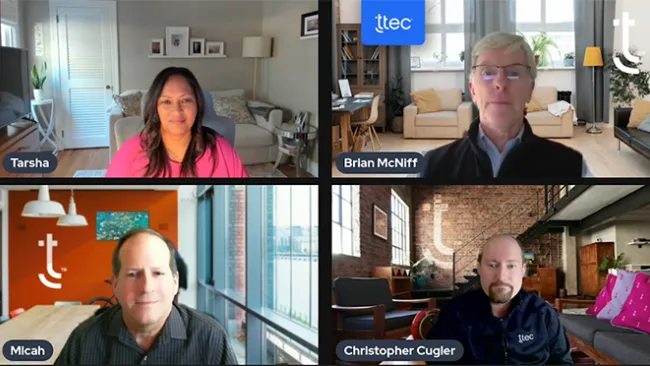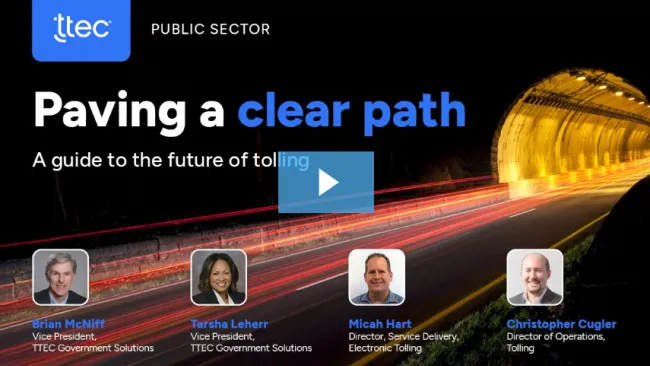At a time when more people than ever are demanding an excellent customer experience (CX) from the private sector, federal agencies are increasingly focused on improving the government customer experience. Customer experience officers, directors, and industry experts recently gathered online at the 2021 Government Customer Experience Virtual Conference, hosted by Digital Government Institute, to share lessons and insights for delivering a better CX. Here are key highlights from the conference.
“There isn’t a single path to CX”
Four customer experience experts representing different federal agencies shared advice gleaned from their experience establishing a CX department at their respective organizations:
“CX management should be a pull, not a push,” said Stephanie Bogan, chief customer experience officer at the Director of Customer Experience Division in the National Archives and Records Administration (NARA). “Know your audience, use plain language and don’t assume everyone knows what you’re talking about.”
Chelsea D’Angona, customer experience administrator for patents at the United States Patent and Trademark Office (USPTO) recommended finding a partner to bolster a CX initiative. “Maybe they’re in a different discipline or area of the organization,” she said. “As the saying goes, if you want to go fast, go alone, if you want to go far, go with others.”
When collaborating to improve CX across an organization, it’s important to keep in mind that “there are different stakeholders who may view their work differently [from you]” said Eric Bruce, head visitor of experience and evaluation at the National Gallery of Art. “Connect with empathy and you’ll be successful.”
David Wernecke, chief experience officer at the Consumer Financial Protection Bureau (CFPB), said, “There isn’t a single path to CX. It also takes time. A lot of us were put in place to improve something right away, but when we’re gone, the service should continue to be improved—that’s where the real value comes in."
Reframe and identify root problems
Barbara C. Morton, deputy chief veterans experience officer at the U.S. Department of Veterans Affairs, who, along with several agency partners, developed a Customer Experience Cookbook that serves as a resource for CX practitioners across the federal government, shared examples of how the VA has worked to improve the veteran experience.
For instance, when the VA realized that veterans were having a hard time navigating the agency’s many benefits and programs, the agency “tied insights to actions” by creating a VA welcome kit, Mortan said. “The kit showed them how to get started, mapping the veteran’s life journey and showcasing where VA fits into their life cycle,” she said. The agency also took veterans’ feedback into consideration when deciding that VA.gov would be the so-called front door or main way for accessing the VA virtually. Customer satisfaction has increased 25% since these changes were implemented, Mortan said.
Journey maps, she added can also be helpful internally when “people see a problem and have a hard time knowing that they’re solving the right problem. [Journey maps] can reframe and identify certain problems.”
Assess and address CX Gaps to build resilience
TTEC’s Andy Martin, Group VP of business development, public sector and Steve Parowski, Group VP, public sector discussed the challenges that many private and public organizations faced in responding to the demand for customer support at the onset of the pandemic.
“We saw a decade of digitization in 6 months,” Parowski said. “Legacy systems couldn’t keep up…COVID-19 exposed the digital gap between systems, whether it was on premise or smaller cloud-hosted solutions.” Companies that are seeking to address those gaps are updating and expanding their resources with artificial intelligence and automation as well as “optimizing the way they hire, train, and equip their workforce,” Martin continued.
Parowski and Martin shared several best practices for building resilience in a contact center:
Tie solutions to agency objectives: Avoid implementing new technology solutions for technology’s sake by keeping agency outcomes in mind. What do you want to achieve by implementing this technology?
Training: AI can train and onboard more agents faster than traditional methods by allowing agents to practice their skills with the AI at any time and provide instant feedback.
Security: In addition to seeking partners that adhere to national security standards, secure calls, texts, and emails to your contact center or remote associates by making sure they’re encrypted and associates are unable to retrieve data on their own.
Accelerate information access: Migrating applications to cloud services gives citizens faster and easier access to information.
Extend resources: One advantage of a cloud-based contact center is the ability to quickly activate other technologies to alleviate surge volume. For example, an AI-powered bot can screen and/or deflect calls, allowing agents to focus on assisting the caller.
Ultimately, “that connective tissue between agency objectives, the citizen experience, and the technology is really what pulls all this together,” Martin said.
The main takeaway is that while most government agencies have been slow to adopt, much less prioritize CX initiatives, that is changing. More and more government agencies are embracing CX best practices, methodologies, and techniques to truly bring the citizen experience into the 21st century.
Click here to watch Andy Martin and Steve Parowski’s full session, Responding to the CX Mandate.


















